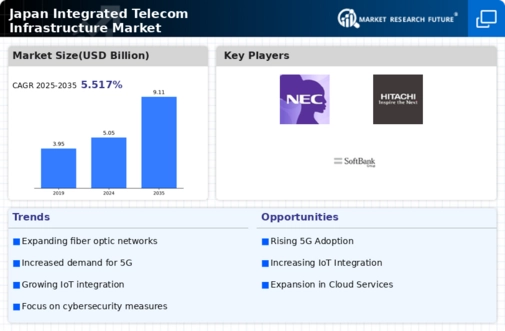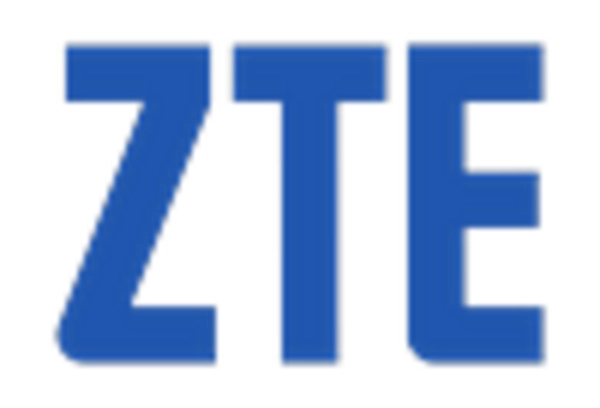Emergence of Smart Cities
The concept of smart cities is gaining traction in Japan, significantly impacting the integrated telecom-infrastructure market. As urban areas evolve, there is a growing need for advanced telecommunications systems to support smart technologies, such as IoT devices, smart grids, and intelligent transportation systems. By 2025, it is projected that over 50% of urban areas in Japan will implement smart city initiatives, necessitating the development of integrated telecom infrastructure to facilitate seamless communication and data exchange. This trend is likely to drive investments in network upgrades and the deployment of next-generation technologies, thereby enhancing the overall efficiency and sustainability of urban environments.
Focus on Sustainable Practices
Sustainability is becoming a critical consideration in the integrated telecom-infrastructure market in Japan. As environmental concerns rise, telecom companies are increasingly adopting sustainable practices in their operations. This includes investing in energy-efficient technologies and renewable energy sources to power telecom infrastructure. By 2025, it is anticipated that at least 30% of telecom operators in Japan will implement green initiatives, such as reducing carbon emissions and minimizing waste. This shift towards sustainability not only aligns with global environmental goals but also enhances the reputation of telecom companies, potentially attracting environmentally conscious consumers and investors. The integration of sustainable practices is likely to reshape the landscape of the integrated telecom-infrastructure market.
Increased Mobile Data Consumption
The integrated telecom-infrastructure market in Japan is witnessing a significant rise in mobile data consumption, driven by the proliferation of smartphones and mobile applications. As of 2025, mobile data traffic is expected to increase by over 40% compared to previous years, prompting telecom operators to enhance their infrastructure capabilities. This surge in demand for mobile data services necessitates the expansion of network capacity and the deployment of advanced technologies, such as 5G. Consequently, telecom providers are likely to invest heavily in integrated telecom infrastructure to ensure they can meet the growing needs of consumers and businesses, thereby fostering a more connected society.
Government Initiatives and Support
The Japanese government plays a pivotal role in shaping the integrated telecom-infrastructure market through various initiatives and support programs. Recent policies have focused on promoting digital transformation and enhancing telecommunications infrastructure to foster economic growth. For instance, the government has allocated approximately ¥1 trillion ($9 billion) for infrastructure development projects aimed at improving connectivity in rural areas. Such initiatives not only aim to bridge the digital divide but also encourage private sector investments in integrated telecom infrastructure. The collaboration between public and private entities is expected to create a more resilient telecom ecosystem, ultimately benefiting consumers and businesses alike.
Rising Demand for High-Speed Connectivity
The integrated telecom-infrastructure market in Japan is experiencing a notable surge in demand for high-speed connectivity. This demand is primarily driven by the increasing reliance on digital services across various sectors, including education, healthcare, and entertainment. As of 2025, approximately 80% of Japanese households are expected to have access to high-speed internet, which necessitates robust telecom infrastructure. The government has also set ambitious targets to enhance broadband penetration, aiming for 100% coverage by 2027. This push for high-speed connectivity is likely to stimulate investments in integrated telecom infrastructure, as service providers seek to upgrade their networks to meet consumer expectations and support the growing number of connected devices.

















Leave a Comment